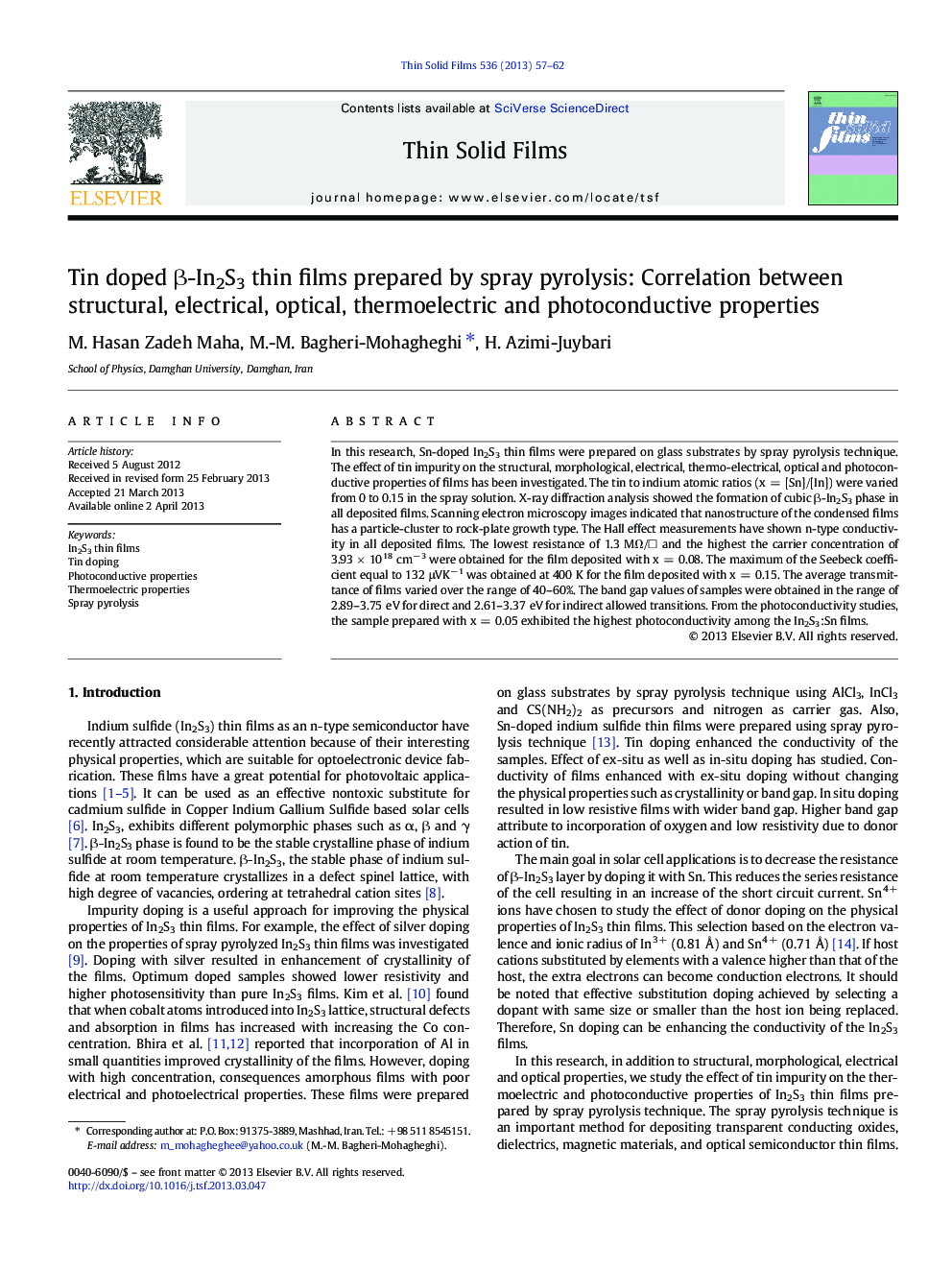| Article ID | Journal | Published Year | Pages | File Type |
|---|---|---|---|---|
| 8036575 | Thin Solid Films | 2013 | 6 Pages |
Abstract
In this research, Sn-doped In2S3 thin films were prepared on glass substrates by spray pyrolysis technique. The effect of tin impurity on the structural, morphological, electrical, thermo-electrical, optical and photoconductive properties of films has been investigated. The tin to indium atomic ratios (x = [Sn]/[In]) were varied from 0 to 0.15 in the spray solution. X-ray diffraction analysis showed the formation of cubic β-In2S3 phase in all deposited films. Scanning electron microscopy images indicated that nanostructure of the condensed films has a particle-cluster to rock-plate growth type. The Hall effect measurements have shown n-type conductivity in all deposited films. The lowest resistance of 1.3 MΩ/â¡ and the highest the carrier concentration of 3.93 Ã 1018 cmâ 3 were obtained for the film deposited with x = 0.08. The maximum of the Seebeck coefficient equal to 132 μVKâ 1 was obtained at 400 K for the film deposited with x = 0.15. The average transmittance of films varied over the range of 40-60%. The band gap values of samples were obtained in the range of 2.89-3.75 eV for direct and 2.61-3.37 eV for indirect allowed transitions. From the photoconductivity studies, the sample prepared with x = 0.05 exhibited the highest photoconductivity among the In2S3:Sn films.
Related Topics
Physical Sciences and Engineering
Materials Science
Nanotechnology
Authors
M. Hasan Zadeh Maha, M.-M. Bagheri-Mohagheghi, H. Azimi-Juybari,
